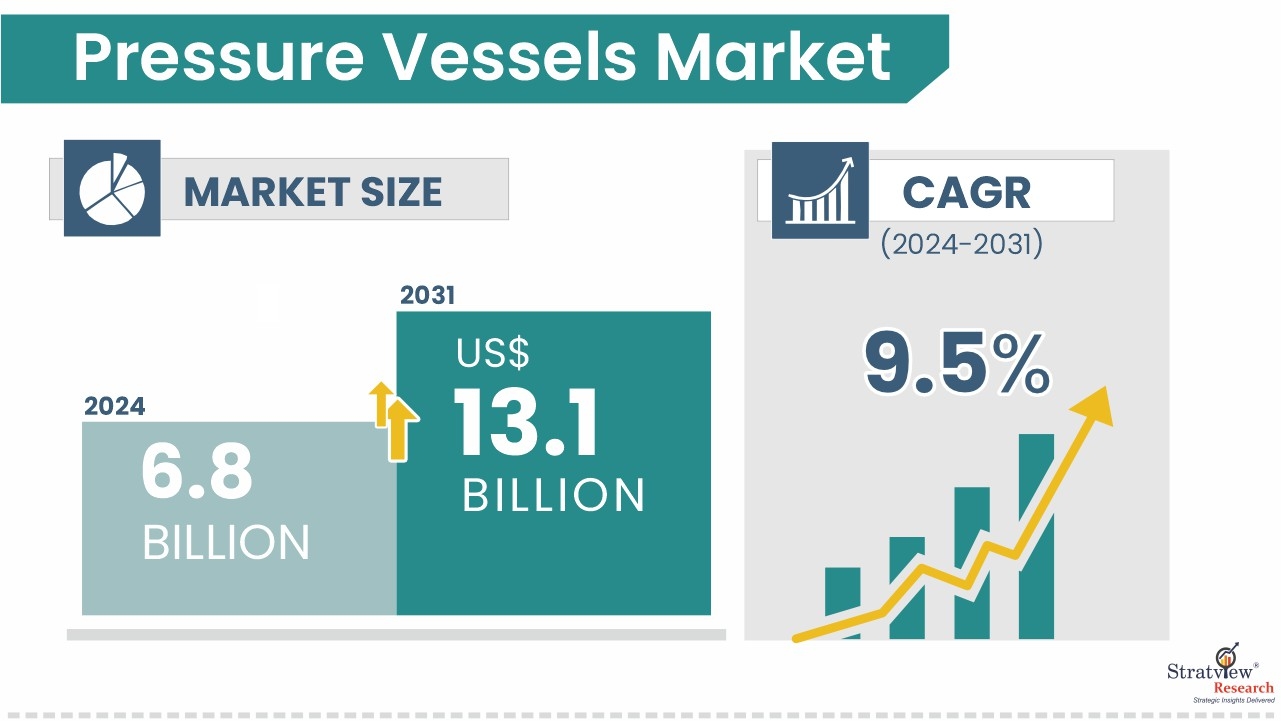Inside Pressure Vessels: Applications, Regions, and the Composite Upswing

Behind the headline market, two structural shifts matter: the rise of composite vessels and the formalization of hydrogen use cases. Stratview Research sizes the pressure vessels market at USD 6.8 billion in 2024, projecting USD 13.1 billion by 2031 at a 9.5% CAGR (2024–2031).
Download the Free Sample Report:
https://www.stratviewresearch.com/Request-Sample/438/Pressure-Vessel-Market.html#form
Drivers
- Mobility & logistics electrification. FCEV programs in passenger, bus, and heavy-duty segments favor lightweight Type IV tanks; towpreg and wet-winding lines are ramping to meet rate and quality needs.
- Hydrogen infrastructure scale-up. Storage and distribution assets for H₂—plus LNG and industrial gases—elevate gas carrier & storage growth in the broader vessel market.
- M&A and portfolio focus. Recent moves (e.g., Hexagon portfolio reshaping; Worthington, Faurecia/Forvia, Luxfer activities) signal capacity alignment around hydrogen and alternative fuels.
Trends
- Application map: In Stratview’s core vessel study, transportation leads current demand; gas carrier & storage posts the fastest trajectory as terminals, hubs, and tube-trailers scale.
- Technology & process: Type IV gains value share on mobility; wet winding holds volume today while towpreg adoption rises for speed, cleanliness, and laminate quality at mass production.
- Regional dynamics: Asia-Pacific retains the largest share in both metallic and composite vessels, supported by OEM footprints and manufacturing ecosystems; Europe’s policy-led hydrogen buildout keeps its growth outlook strong.
- Players to watch: Hexagon Purus/Composites, Luxfer, Worthington, ILJIN Hysolus, NPROXX, CIMC Enric, Plastic Omnium, FORVIA—active across onboard storage and stationary uses.
Conclusion
The market is bifurcating: steel Type I vessels sustain traditional process and energy needs, while composite Type IV unlocks weight-critical mobility and new hydrogen workflows. With Asia-Pacific anchoring demand and Europe accelerating policy-driven deployments, strategies that span code-compliant steel and scale-ready composites, tied to hydrogen and LNG programs, should seize the next leg of growth. Together, Stratview’s reads—USD 13.1 billion for total vessels by 2031 and a near-20% CAGR in carbon composites—outline a durable, diversified runway.
- Questions and Answers
- Opinion
- Motivational and Inspiring Story
- Technology
- Live and Let live
- Focus
- Geopolitics
- Military-Arms/Equipment
- Securitate
- Economy
- Beasts of Nations
- Machine Tools-The “Mother Industry”
- Art
- Causes
- Crafts
- Dance
- Drinks
- Film/Movie
- Fitness
- Food
- Jocuri
- Gardening
- Health
- Home
- Literature
- Music
- Networking
- Alte
- Party
- Religion
- Shopping
- Sports
- Theater
- Health and Wellness
- News
- Culture

